
Dear Members (a note from Deb Hickey):
I’m seven years old. I’m slightly chubby and more than a little bit awkward. I’m at a birthday party. I don’t know what to say, nor how to act around the gaggle of girls as they brag about their collection of Cabbage Patch Kids and their favorite pop songs. As they roll out their sleeping bags and jabber on about the upcoming evening’s festivities, I realize I was never asked to bring my sleeping bag. They don’t want me to stay. They only included me because I live down the street and my neighbor’s mom must have made the invitation mandatory. As I look around the room empty handed, my face begins to burn with emotion. I take a few steps backward and glance toward the door, looking frantically for my coat. I know what to do. I know where to go. I want to feel safe. I want to go home.
I’m 18 years old. I feel like the only one who doesn’t understand. I feel different from my classmates. I’m afraid to speak up. I’m embarrassed to ask questions. Math never made sense to me. As my professor clamors on about some statistical procedure that’s way above my head, I’m doodling rainbows with tiny clouds at each end like I did in grammar school. When I look up, everyone is staring at me as I realize I’ve been asked to identify the nature of the data my professor has just outlined. Dumbfounded, I feel the tears begin to puddle in my eyes as the knots in my stomach rapidly multiply. I want to disappear. I want the floor to open and swallow me. I want to run. I want to feel safe. I want to go home.
During my childhood years, every time I needed my mother, she seemed to know it even before she saw my face. As I flew out the front door of my neighbor’s house and sprinted down the street as fast as my short little legs would carry me, tears streaming sideways across my cheeks, I could already see her in the doorway. Her arms reached out to me as I rounded the corner into our yard. And then she let me cry on her shoulder while she stroked my hair and whispered in my ear, “Mummy loves you and I’ll always be here.”
Even if I could only reach him by phone from my college dorm room, my father was my saving grace when it came to understanding the intricate patterns hidden in the dynamics of statistics. And when I hung my head, my hands pulling at my hair, he could feel my frustration and he’d calmly begin again. He never got annoyed with me. He never talked down to me. He never gave up on me. And when I finally began to understand, he praised me up and down for my endurance.
My parents turn 80 this spring – my mother in March and my father in April. On these milestone birthdays, I want them to know their love over the years made me strong. I want to thank them for always giving me a safe place to fall. I want to tell them that all the memories I have with them will stay gold forever.
Happy birthday, Mom and Dad. I’m truly grateful I’ve had you in my life for so many years.
--------------
Last month, I wrote about my favorite childhood band, Duran Duran. The founding member and lead guitarist, Andy Taylor, was recently diagnosed with metastatic prostate cancer. I, sort of jokingly, asked our members if they had any ideas for connecting with Andy so I could inform him about theranostics.
To my surprise, I heard back from dozens of members – all with interesting ideas for how to get in touch with Mr. Taylor. One member even found Andy’s wife’s photography website and contact information! Although I reached out twice, I haven’t heard back. Regardless, I’m truly thankful to all who reached out to me.
I’m also thankful to one member who made me laugh out loud when he wrote, “At 86, I’m so ancient I wouldn’t know Andy Taylor from Andy Capp.”
--------------
This month we tell you about the next generation of blood tests that could mean the end to invasive prostate biopsies. There’s also a new urine test that can detect pancreatic and prostate cancers with up to 99 percent accuracy. It gets even better – this test may one day be something you can use at home! We include a comprehensive article on a new rectal spacer that appears to provide distinct advantages over the alternative space gel product. Is there a link between fathering daughters and developing prostate cancer? Find out in our “Flashback” section. In our “Health” section, we report on a new study that found people who exercised regularly produced anti-cancer processes in the body. In fact, even just one aerobic work-out can help delay cancer progression! And finally, we give you five reasons you should think about swimming for better overall health.
As always, we love to get feedback on the newsletter and welcome any suggestions you have on how to improve the value of the BOB Tales to our members. Just send an email to [email protected].
Deb Hickey
To print the BOB Tales newsletter or view the newsletter with a larger font size, click here for the PDF file.
.jpg)
In This Issue:
- Next Generation of Blood Tests Could Mean the End of Prostate Biopsies
- Can a Urine Test Detect Pancreatic and Prostate Cancers? Study Shows 99% Success Rate
- New Rectal Spacer Protects Rectum from Radiation Damage
- Fathering Daughters and Prostate Cancer – a Connection?
- Study: How Men with Prostate Cancer Can Live Longer
- 5 Reasons to Swim for Exercise
Next Generation of Blood Tests Could Mean the End of Prostate Biopsies
EpiSwitch
According to a recent study, a new and highly accurate blood test, called the Prostate Screening EpiSwitch (PSE), is able to detect 94 percent of prostate cancers.
“There is no single test for prostate cancer, but PSA blood tests are among the most used, alongside physical examinations, MRI scans, and biopsies,” said Professor Dmitry Pshezhetskiy, one of the study’s authors.
After observing results involving 147 patients, researchers determined the PSE test to be superior to the PSA test. And it can be used for both diagnostic and screening purposes. This could limit the number of patients needing more expensive tests like the MRI.
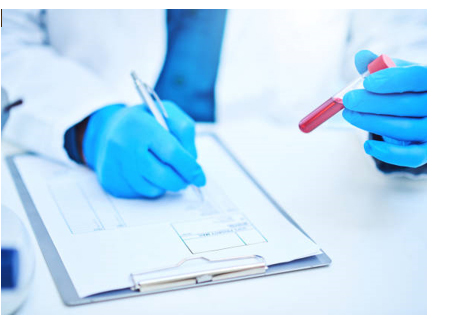 Jon Burrows, Ph.D. believes the PSE test may benefit those at risk of being diagnosed with prostate cancer as well. “There’s a clear need in everyday clinical practice for a highly accurate blood test that can screen men for prostate cancer and accurately identify those at risk while sparing those who, up to now, would be subject to unnecessary, expensive, and invasive procedures,” said Burrows.
Jon Burrows, Ph.D. believes the PSE test may benefit those at risk of being diagnosed with prostate cancer as well. “There’s a clear need in everyday clinical practice for a highly accurate blood test that can screen men for prostate cancer and accurately identify those at risk while sparing those who, up to now, would be subject to unnecessary, expensive, and invasive procedures,” said Burrows.
Because the study was limited to a small population of patients with high cancer prevalence, researchers plan to study a larger population of patients with lower cancer prevalence. This may be the reason the test is not yet commercially available.
TruBlood
Another recent study has produced results that show another new blood test is also highly accurate in detecting prostate cancer. The “Trublood” test showed great promise in improving early detection of the disease.
Of the 960 men in the study, 160 were known to have prostate cancer. The test accurately detected all 160 men with the disease without mis-identifying any of the 800 men without the disease.
The test was also able to detect 91 percent of positive cases in 210 men with suspected prostate cancer. And, it returned zero false positive results for men without prostate cancer. This means the test could spare thousands of painful biopsies or MRI scans.
Researchers trialed the test on men with signs of suspected cancer, such as an enlarged prostate. One third of the men were diagnosed with prostate cancer while two thirds had benign prostate conditions. Among the 68 with cancer, the test was positive for 56. Results for six of the men were less clear, but unlikely to be negative. The test provided negative results for all 142 men who didn’t have prostate cancer.
“These results show great promise and suggest that it may be possible to use this test to detect cancer in the first place,” said Simon Grieveson of Prostate Cancer UK.
Scientists are excited about these blood tests. They hope they can someday be used to screen healthy men for early signs of the disease.
Can a Urine Test Detect Pancreatic and Prostate Cancers? Study Shows 99% Success Rate
Korean researchers say a simple urine test – one that could eventually be used at home – can detect pancreatic and prostate cancers with up to a 99 percent accuracy. According to lead author, Dr. Ho Sang Jung, urine from cancer patients contains cancer metabolites while healthy urine does not. The goal of the study was to determine whether a urine test could detect those metabolites, which are released by cancer cells to promote the growth of tumors. Dr. Jung says the test can also detect various stages of cancer.
“We are not sure that the test strip can differentiate cancer at very early stages, but at least it can suggest the possibility of cancer status - so the patient may then go to the hospital for a precise medical checkup,” said Jung.
Not Everyone is a Believer
Dr. James Anaissie, a urologist with Memorial Hermann in Houston, TX, who was not involved in the study, is receptive to the potential of the technology, but also a bit skeptical. “Although they report excellent sensitivity and specificity for prostate cancer, the data to support this is available only upon request of the research team, and they have almost no tables demonstrating these findings, which I would consider standard for studies of this nature,” he said.
At-home Tests
Dr. Jung foresees several possible practical uses of the test, including screening for cancer before heading to a doctor, monitoring for cancer recurrence after treatment, or supplementary testing in addition to blood work.
Study Limitations
Researchers were able to get only 100 urine samples for the study. Anaissie also suggests that more studies are needed to determine if the test works when there’s a urinary tract infection or blood in the urine, which is not uncommon in men with prostate cancer.
The researchers’ goal is for the urine test to extend to other diseases, such as lung and colorectal cancers.
New Rectal Spacer Protects Rectum from Radiation Damage
The prostate gland is adjacent to the rectum. When radiation (proton or IMRT) is delivered to the prostate to destroy prostate cancer, a small margin around the prostate capsule typically receives radiation as well. That margin can, and often does, include the anterior (inside) wall of the rectum. To protect the rectum from radiation damage doctors have recently begun using an injectable spacer between the rectal wall and the prostate. A new rectal spacer product called Barrigel has recently been introduced, and a growing body of evidence shows that it may provide distinct advantages over the alternative space gel product.
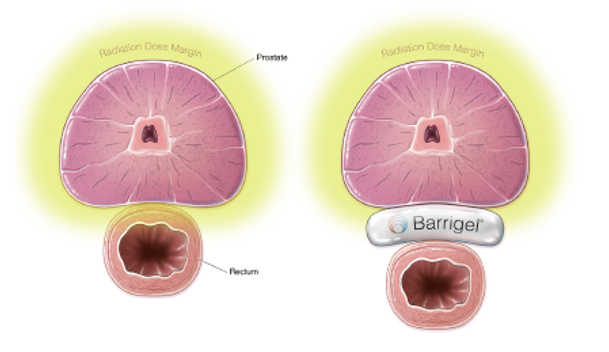
FDA cleared in mid-2022, Barrigel is a bio-resorbable rectal spacer made from Non-Animal Stabilized Hyaluronic Acid (NASHA). A recent study has shown Barrigel to be effective at achieving a clinically significant reduction in radiation dose to the rectum, resulting in fewer, rectal side effects for patients, as compared to the control group.
Barrigel is the first hyaluronic acid rectal spacer. Hyaluronic acid is a substance that is naturally present and widely distributed in the human body and is used in many common medical procedures. NASHA has been used for over two decades in more than 50 million procedures in men, women, and children globally.
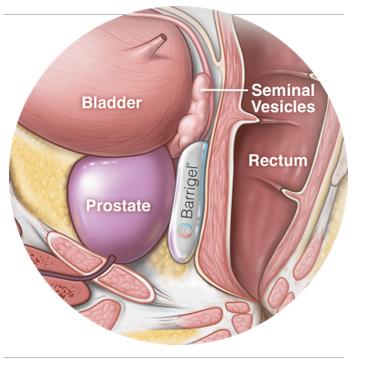 Barrigel was used in the first FDA-reviewed randomized controlled study of rectal spacers using hypofractionated (HF) radiotherapy. The now commonly used HF procedure involves fewer treatments using higher radiation doses, allowing the patient to complete his treatment in a much shorter amount of time (example: four weeks instead of eight weeks). But, while HF is a more patient-friendly approach than the longer treatment protocol, it delivers more radiation per treatment, so protecting the organs at risk (e.g. the rectum) becomes even more important.
Barrigel was used in the first FDA-reviewed randomized controlled study of rectal spacers using hypofractionated (HF) radiotherapy. The now commonly used HF procedure involves fewer treatments using higher radiation doses, allowing the patient to complete his treatment in a much shorter amount of time (example: four weeks instead of eight weeks). But, while HF is a more patient-friendly approach than the longer treatment protocol, it delivers more radiation per treatment, so protecting the organs at risk (e.g. the rectum) becomes even more important.
In Barrigel’s multicenter randomized clinical trial published in JAMA Oncology, patients were randomized to the presence or absence of the rectal spacer before receiving hypofractionated radiation therapy. 98.5 percent of patients showed Barrigel to be effective in achieving a significant reduction in radiation to the rectum. Patients who met the primary endpoint averaged an 85 percent reduction in the dose to the rectum, leading to fewer side effects. In this trial, the patients who received Barrigel had a significantly lower rate of grade 2 and higher gastrointestinal (GI) toxicity than patients who did not have the gel in place.
Barrigel reduced the rate of complication including inflammation of the rectum (radiation proctitis), diarrhea, and hemorrhoids. There were no patient complaints of rectal pain/discomfort following the procedure. Also, there were no reported gel related adverse effects, including embolisms in the clinical trial. This hasn’t been the case with other rectal spacer products on the market.
One important difference with Barrigel, is that it remains malleable throughout treatment. Because of its unique sculptable nature, the gel remains soft during insertion, allowing the physician to sculpt the spacer in real time to create a customized spacer that is molded to a patient’s unique anatomy. This ultimately results in more uniform coverage with less rectal toxicity and side effects for the patient as demonstrated in the multicenter clinical trial. Barrigel’s malleability also means greater comfort for the patient while the spacer is in place during the duration of radiation treatment. Patients whose physician chooses Barrigel as their rectal spacer do not report the feeling of rectal fullness or the “sitting on a golf ball” feeling following the implant – as has been the case with the alternative rectal spacer – and importantly, no side effects of this type were found in the pivotal trial.
Physician clinical benefits for Barrigel are numerous. Every patient’s anatomy is different, and Barrigel provides the control required for optimized coverage, which can better protect patients undergoing radiation treatment for prostate cancer. Controlled placement leads to better dosimetry, less treatment related toxicity and improves patient outcomes.
In addition, Barrigel is the only gel spacer that can be viewed clearly on ultrasound, which means that the product remains visible and under the direct control of the physician during the duration of the placement procedure. The gel appears very hypoechoic (dark) on ultrasound so the physician placing the product can clearly see the space created and adjust the spacer shape and volume in real time as needed.
Barrigel, unlike other rectal spacers on the market which are injected as a liquid and polymerize within 8 to 10 seconds, remains in a viscoelastic (malleable) gel form throughout the entire procedure. However, once implanted, it doesn’t migrate and stays where it’s placed. This allows the implant to be customized to a patient’s specific anatomy with the opportunity for complete coverage from the prostate base to the apex and allowing for symmetric and consistent spacing of the entire prostate and seminal vesicle interface. The adequate and symmetric coverage achieved with Barrigel has demonstrated a Grade 2 toxicity benefit because the physician is not constrained by the pressure of fluid dynamics and time during the implant.
A significant benefit of the Barrigel spacer is that the physician is not under pressure to administer the product in a few seconds before it hardens in place. As a result, the physician can sculpt the gel to provide a more symmetric spacer to protect the rectum. Data analysis shows over 95 percent of the time Barrigel implants are symmetric and allow spacing of the entire rectum, compared to only 49 percent of the time with the alternative spacer. All rectal spacing is good; but safe, symmetric (full coverage), customizable and consistent space is better.
This spacer is typically implanted in a doctor’s office, outpatient clinic, or hospital prior to the start of radiation treatment. The procedure takes less than an hour and is performed under local, regional or general anesthesia.
In addition to being FDA approved in the U.S. Barrigel has been approved for use in Europe and Australia. Many prominent U.S. radiotherapy centers (both proton and IMRT) are routinely using Barrigel. These include Dana Farber Boston, MD Anderson Houston, Mayo clinic Scottsdale, UCLA Medical Center and many others.
We’ve been producing BOB Tales newsletters for more than 20 years. During this time there have been articles that many new members haven’t seen, and some older members may have forgotten. So, we periodically re-run articles from past newsletters. The following is from May 2007.
Fathering Daughters and Prostate Cancer – a Connection?
According to a study published in the Journal of the National Cancer Institute, American and Israeli researchers say they may have found a link between prostate cancer and a gene that makes men more likely to father daughters.
The scientists found that men with three daughters and no sons were up to 60 percent more likely to develop prostate cancer compared to those who had fathered a son. They suggested the finding may be due to a genetic abnormality in the mens’ Y chromosome which makes both female offspring and prostate cancer more likely. The Mailman School of Public Health and Hebrew University teams emphasized that there’s no innate prostate cancer risk associated with the act of conceiving a daughter.
The increased risk for prostate cancer fell to 47 percent among men who had one or two daughters and no son. “We anticipate this finding will have a significant impact on the direction of research in prostate cancer,” said Professor Susan Harlap.
► BOB Comment: For the record, Bob Marckini has two daughters and no sons.

“Inspired by the Care We Received”
When BOB member Chris White was diagnosed with prostate cancer in 2010, he interviewed about 10 surgeons and radiologists about treatment options. “But it was a dead end,” said Chris. “I just wasn’t comfortable with surgery or standard radiation.”
Soon thereafter, Chris found Bob Marckini’s book, You Can Beat Prostate Cancer. “What an inspiration,” said Chris. “After reading it, I knew what I wanted to do. And I was intrigued by what he said about the Loma Linda University Cancer Center in California.”
A few weeks later, Chris traveled across the country from Portsmouth, NH to visit LLUCC. “You know that bronze sculpture – the one with Jesus sitting on the bench with his arms open wide? When I saw that, I was convinced I was in the right place,” said Chris.
Chris was referring to the “Come Unto Me” sculpture that serves as an inspirational site for visitors, patients and employees arriving at the hospital. It depicts a seated Christ inviting children and adults to come forward in welcome. It serves as a visual representation of Loma Linda University Health’s commitment to continuing the teaching and healing ministry of Jesus Christ. The work reminds viewers that they’ve come to a place where healing takes place on physical, mental, and spiritual levels.
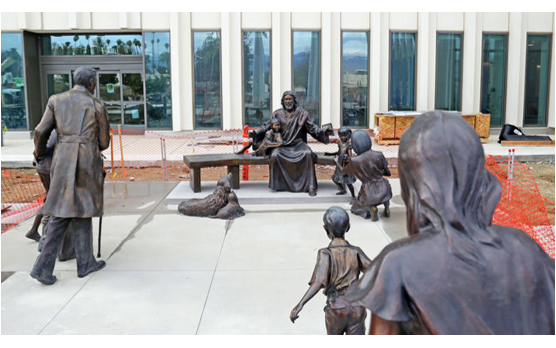
“I remember telling Dr. Lynn Martell about that,” said Chris. “And he said to me, ‘That’s what we try to do – take care of our patients as if we were in Jesus’ role.’” Chris said that’s exactly what he and his wife Alice experienced while he was in treatment. “The atmosphere was God-centric. We felt this incredible depth of love everywhere we went.”
Chris described a specific experience that surprised him. “Lynn told me I could get a massage at the hospital, so I made an appointment,” said Chris. “I’ve never had a massage like that before – or since. The therapist prayed over me and asked the Lord to inform her fingers as to where she needed to focus.”
Unfortunately, Chris had some issues getting his treatment covered by his insurer, Harvard Pilgrim. “They turned me down. They told me I could get treatment on the east coast instead,” said Chris. “But I told them the quality of care wouldn’t be the same – I wanted Loma Linda.” Furthermore, Chris had already made appointments in California to prepare for treatment. But, unbeknownst to him, Harvard Pilgrim went ahead and canceled all of them.
“When I showed up at LLUCC, I was told they had no record of my appointments,” said Chris. “My heart sank.” But, when LLUCC’s financial department offered a significantly discounted financing option, Chris was sold. “They worked everything out for me,” said Chris. “I got a low-interest loan that I could pay back over three to four years.”
 “I’ve joked about my ‘radiation vacation,’” said Chris. “But it was really a window to becoming close to the Divine.”
“I’ve joked about my ‘radiation vacation,’” said Chris. “But it was really a window to becoming close to the Divine.”
Because of his appreciation for his experience and because he was “inspired by the care” he received, following his treatment, Chris immediately began making annual contributions to proton research at LLUCC via the Robert J. Marckini Chair. He also placed Loma Linda University Health in his estate plan.

Giving Options
Online
From the pull-down menu, choose where you'd like to direct your gift — 1) Proton Research through the James M. Slater Chair, 2) Proton Research through the Robert J. Marckini Chair, or 3) choose "Other" and specify where you'd like your gift directed in the space provided.
By Check
- Make your check out to "LLUCC."
- Specify where you'd like to direct your gift in the memo line — 1) Slater Chair, 2) Marckini Chair, 3) Theranostics, or 4) write "Unrestricted" so LLUH can use it where it's needed most.
- Mail your check to: LLUH, Office of Philanthropy P.O. Box 2000, Loma Linda, CA 92354.
By Phone
- Call Regina Joseph at 909-558-5010.
Study: How Men with Prostate Cancer Can Live Longer
According to a new study published in the journal Prostate Cancer and Prostatic Diseases, just one aerobic work-out can help delay cancer progression – even aggressive cancer. The study furthers research by Edith Cowan University (ECU) in Australia that found people with prostate cancer can change the chemical environment within their body to suppress cancer cell growth by exercising.
The researchers found people who exercised regularly for six months produced myokines, a protein produced by skeletal muscles that stimulate anti-cancer processes in the body. Even just one period of vigorous exercise can elevate myokines, adding to the suppression of cancer.
According to Professor Rob Newton from the research team, this breakthrough discovery could shape advice given to future cancer patients. “The findings from our work are particularly exciting because we report for the first time ever that men with advanced prostate cancer are able to produce an acute elevation in anti-cancer molecules in response to a single bout of vigorous exercise,” said Newton.
Newton explains that exercise isn’t a cure for palliative patients, but it could extend their survival. He added, “The optimal dose of exercise isn’t known yet, but it’s likely to be 20-plus minutes each day and must include resistance training to grow the muscles, increase the size and capacity of the internal pharmacy, and stimulate the myokine production.”
5 Reasons to Swim for Exercise Source
1. Swim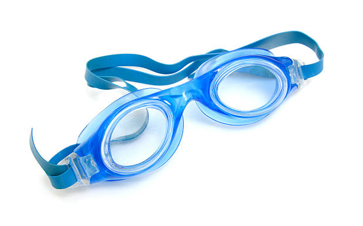 ming is a whole-body exercise – it works your legs, arms, and core.
ming is a whole-body exercise – it works your legs, arms, and core.
2. Swimming has unique cardiovascular benefits. Regulating and timing your breathing helps expand your lung capacity, and immersion in water helps your heart work more efficiently.
3. Specific muscles trained include your latissimus dorsi (your largest muscles, essential for posture) as well as your core – needed for balance, preventing falls, and everyday lifting activities.
4. Swimming decreases anxiety, and exercise therapy in warm water can decrease depression and improve mood.
5. Swimming is low impact – there’s minimal stress on knees, hips, and ankles.
► BOB Comment: Bob Marckini swims a mile, three times a week ─ that’s 150 miles a year. Since he began swimming for health 10 years ago, he says he’s swum 1,500 miles. “That’s like swimming from Boston to Kansas,” he says.

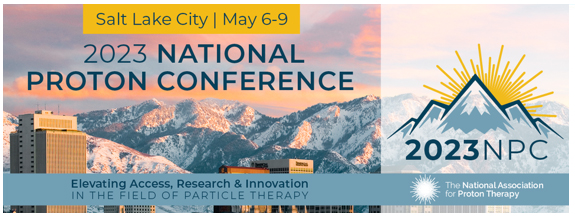
The National Association for Proton Therapy (NAPT) is a nonprofit organization founded to educate and increase public awareness about the clinical benefits of proton beam therapy. Founded in 1990, NAPT advocates to ensure patient choice and access to affordable proton therapy and to encourage cooperative research and innovation to advance the appropriate and cost-effective use of proton therapy.
Each Spring, NAPT holds the National Proton Conference (NPC). The event brings together leaders in the field of particle therapy with a robust agenda focused on emerging clinical research, operational efficiencies, and insurance authorizations.
Deb Hickey plans to attend NPC 2023 – “Elevating Access, Research, and Innovation in the Field of Particle Therapy” – in Salt Lake City, UT, May 6-9.

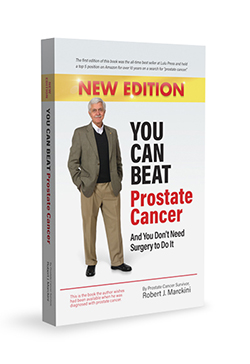 You Can Beat Prostate Cancer: And You Don’t Need Surgery to Do It – Second Edition
You Can Beat Prostate Cancer: And You Don’t Need Surgery to Do It – Second Edition
200 Amazon Reviews
As of this writing, there are 200 reviews on Amazon, almost all five-star, and the book is in the No. 2 position on a general search for “prostate cancer” in the books category.
Following is a recent review by one of our newest members:

The Gift of Proton
Bob has thoughtfully and carefully provided a road map to successful prostate cancer treatment. In my opinion, proton therapy is the most effective treatment with minimal side effects. It provides better control of radiation delivery to the prostate gland and surrounding tissue.
Beware of the “gold standard” surgical removal suggested by urologists that are uninformed. Take the time to read Bob’s book and speak with former proton patients. Compare that with what you hear from men in your community that have elected removal.
I have had 36 treatments. I’ll complete my program in three days. I elected Loma Linda Hospital because they have, by far, the most experience. And they treat the whole body with classes on health and nutrition along with weekly group dinners. I’m a 76-year-old athlete. During treatment, I have run a 6-mile 1,000-foot elevation gain trail three times per week and gone to the complimentary gym four days per week. I’m departing in excellent physical and mental health.
My time in treatment has provided me the opportunity to rethink my life. My commitment is to dedicate a larger portion of my life to helping others. To start, I’ve spoken with the editor of our local newspaper. He’s agreed to write a story on my proton journey. This is just the beginning…
Thank you, Bob.

The Personal Side
Last month we continued with our series of excerpts from Chapter 9 of Bob’s latest book, switching from the technical stuff to the personal side of Bob’s experience of treatment, looking back on the events of 22 years ago. In previous BOB Tales we reported on Bob and Pauline’s arrival in Southern California; events leading up to the start of treatment; his relief on learning that his treatment was truly painless and uneventful; his realization that he made the right treatment decision; his daily routine; his proton technology education process; and the importance of proper nutrition while in treatment. Last month, we talked about the value of maintaining emotional fitness and the importance of the Wednesday night meetings.
This month we’ll talk more about the Wednesday night meetings and the role of physical fitness during treatment.
Continuing on the Wednesday night meeting discussion…
Gerry then asked if there were any visitors who were not patients. Surprisingly, four hands went up. One at a time people stood up to tell their story. They had been recently diagnosed with prostate cancer and were investigating their options. Two were from California and two from out of state. They were there for consults with radiation oncologists and to see firsthand what proton treatment was all about. They stood, reported their numbers, and talked about where they were in their decision-making process. Each was there with his wife, or significant other, which was the case for most of the other men in the room. Thank God for this support from our partners in life.
Next Gerry asked if there were any newbies present. I raised my hand, along with about 12 other men. One at a time we told our story. We ranged in age from early 50s to late 70s and hailed from several U.S. states – one was from Canada. One of the 12 had been fitted for his pod but hadn’t begun treatment. The rest of us were in the early stages of our treatment. I found myself comfortably talking to this group of “brothers,” and I drew a few chuckles when I told them about my exhaustive due diligence and the 56 interviews of former patients.
Others who were in treatment raised their hands and offered comments, observations, poems, and songs they had written about their experience of the pod and the rectal balloon. These two subjects seemed to receive a lot of attention, always in a humorous vein.
I noticed one young woman sitting in the room, and one side of her face appeared to be sunburned. I learned that she was being treated at the proton center for an inoperable tumor on the optic nerve of her left eye. Others in the room were there for tumors on the brain or eye. And one was being treated for macular degeneration. Most who raised their hands and spoke that night were prostate cancer patients. I later learned that, at that time, prostate cancer patients represented about 65 percent of the patients treated at the proton center.
A guest speaker made a presentation that evening. It was Dr. Dan Miller, chief physicist at the medical center. He used overhead slides and a white board to explain, in great detail, how protons are generated; how they are intentionally “spilled” from the accelerator and directed to the treatment rooms; how the narrow beam is expanded; and how the customized devices shape the beam precisely to each patient’s targeted area. Dr. Miller had invited questions at the beginning of his presentation, and the crowd was not bashful. He answered dozens of questions during his talk and for about 20 minutes after it ended.
I looked at my watch and discovered it was 8:30 p.m. We had been there for three hours, and it seemed like 15 minutes! “If all the Wednesday night support group meetings are like this one,” I thought, “I’m not going to miss one of them.” They were – and I didn’t.
My experience of the psychosocial programs at LLUCC, such as the Wednesday night support group, was a major factor in a life-changing decision I would later make, to form a support group that would become international in scope and impact the lives of thousands of people.
Gerry Troy’s dream was to take the programs he helped pioneer at Loma Linda and take them to other medical institutions. He left Loma Linda and helped establish a similar, successful patient program at the University of Florida Health Proton Therapy Institute in Jacksonville, FL. Other proton centers, I have learned, have established similar psychosocial support programs to the substantial benefit of their patients.
Tip: Make sure you participate in the patient support programs when you’re in treatment. They’re an integral part of your treatment and the healing process. And they’re a lot of fun.
Physical Fitness
Another thing I learned early in my treatment is that staying physically fit greatly benefits the immune system and aids the healing process. A strong immune system also helps prevent cancer recurrence. This bears repeating.
Tip: Staying physically fit greatly benefits the patient while in treatment and aids the healing process.
It also strengthens the immune system which helps prevent cancer recurrence.
When I sat through the orientation session during my first visit, I was given a large packet of information on a wide range of subjects including places to stay in the community during treatment, points of interest, technical papers on proton therapy, maps of the area, and other general information. I was reminded that, in California, at 57 years of age, I had already been a “senior citizen” for two years. Not a pleasant thought for me, as I considered myself “approaching middle age.” Nevertheless, there were benefits to being a senior at Loma Linda. Among them were discounts at the hospital cafeteria and preferred parking spaces at the medical center.
Another part of the packet of information I received was a certificate that authorized my wife and me to use the expansive, state-of-the-art recreation and wellness facility on the university campus, called the Drayson Center. This complex is named in honor of Dr. Ronald and Grace Drayson, who provided the lead gift that was used to help build the center.
The $16 million complex serves students, faculty, and patients. The Drayson Center’s mission is to provide opportunities for enhancement of the quality of life within this community through a wide variety of social, recreational, and health-building activities, all consistent with LLUMC’s mission, To Make Man Whole.
Pauline and I were already in reasonably good physical condition. We both exercised regularly and had been following a generally healthful lifestyle. We were encouraged to visit the Drayson Center and take advantage of all it had to offer while I was there for treatment – and we did. Each day we would visit the center and spend about 90 minutes working out. We began our workout by spending a half hour on one of the treadmills. Then we switched to the fitness equipment to do upper and lower body exercises. We found ourselves looking forward to our daily routine at the Drayson Center, and during our eight-week stay we increased both our physical strength and our endurance.
Following our late morning workout, we fell into another routine: Eating lunch at the hospital cafeteria. Seventh-day Adventists take a healthful diet very seriously, and that naturally extends to the hospital cafeteria.
‘Stealth’ Health
Without realizing it, I had been gently led down three very important paths. Within the first few days of my stay, I was eating a more healthful diet; I was exercising daily; and I was participating in programs aimed at nurturing my emotional well-being.
When I returned home in December 2000, I was stronger, healthier, and more physically fit. And, as it turned out, I had a new perspective on spirituality and my faith. Little wonder that proton patients go through “withdrawal” as they near the end of their treatment.
Next month we’ll finish up on the chapter about “The Personal Side” of treatment with an amusing story (not so amusing at the time) about what happened to Bob on the golf course at the peak of his urinary urgency.

Was Bob's book helpful to you?
If Bob’s book was helpful to you and you’d like to help others find it on Amazon, please write a review. Book reviews help boost the book’s visibility within Amazon’s search results for users looking for information on prostate cancer treatments and/or proton therapy.
Proceeds from book sales are used to help fund our efforts and to support proton therapy research.


Last Month’s Brain Teaser
Tom has three, Dick has three, and Harry has three. How many do they all have together?
Hint: The answer is not nine.
Answer: Three! Tom, Dick and Harry are three brothers. Each has three sisters, so altogether they have three sisters.
Winner: The winner is from Tacoma, WA and wishes to remain anonymous.

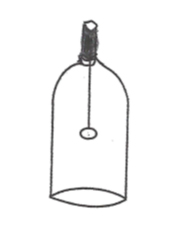 New Brain Teaser
New Brain Teaser
A man is shown a button suspended by a string inside a corked bottle. It is hanging securely from the cork partway down the bottle. How does he manage to cause the button to drop to the bottom of the bottle without moving the cork in or out of the bottle and without breaking the bottle?
Send your brain teaser answer to [email protected] for a chance to win a signed copy of Bob Marckini’s NEW second edition book, You Can Beat Prostate Cancer.

Welcome to the Golden Years
My keys weren't in my pockets. Suddenly I realized I must have left them in the car. Frantically, I headed for the parking lot. My husband has scolded me many times for leaving my keys in the car’s ignition. He’s afraid the car could be stolen. As I looked around the parking lot, I realized he was right. The car wasn’t there. I immediately called the police. I gave them my location, confessed that I had left my keys in the car, and that it had been stolen.
Then I made the most difficult call of all to my husband: “I left my keys in the car and it’s been stolen!”
There was a moment of silence. I thought the call had been disconnected, but then I heard his voice. “Are you kidding me?” he barked, “I dropped you off!”
Now it was my turn to be silent. Embarrassed, I said, “Well, come and get me!” He retorted, “I will, as soon as I convince these cops I didn’t steal your car!”

Getting Old
An elderly couple had dinner at another couple’s house. After eating, the wives left the table and went into the kitchen.
The two gentlemen were talking, and one said, “Last night we went out to a new restaurant, and it was great. I recommend it highly.”
The other man said, “What’s the name of the restaurant?”
The first man thought and thought and finally said, “What’s the name of that flower you give to someone you love? You know, the one that’s red and has thorns.”
“Do you mean a rose?”
“Yes, that’s the one,” replied the man. He then turned towards the kitchen and yelled, “Hey, Rose! What’s the name of that restaurant we went to last night?”


New Voice Technology Allows Scammers to Impersonate Anyone
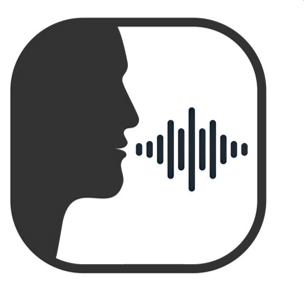 As artificial intelligence technology advances, scammers are finding new ways to exploit it. The newest and most disturbing scam is voice cloning – the artificial simulation of a human voice. It’s being used to imitate the voices of people their victims know and trust to deceive them into giving away their money.
As artificial intelligence technology advances, scammers are finding new ways to exploit it. The newest and most disturbing scam is voice cloning – the artificial simulation of a human voice. It’s being used to imitate the voices of people their victims know and trust to deceive them into giving away their money.
“People will soon be able to use tools like ChatGPT or even Bing and eventually Google, to create voices that sound very much like their voice, use their cadence,” said Marie Haynes, an artificial intelligence expert. “And it will be very, very difficult to distinguish from an actual real live person.”
Carmi Levy, a technology journalist and analyst, said it goes even further: scammers can spoof phone numbers and make it look like the call is coming from the person they’re impersonating. She advises people who receive suspicious calls – especially from anyone asking for money – to hang up and call the person they think is calling directly.
Haynes warned that voice cloning is just the beginning, with AI powerful enough to clone someone’s face as well.
► BOB Comment: This is the real deal. Bob’s nephew, Fredrick, was a recent target of voice cloning. A scammer called a friend of Fredrick’s pretending to be him. It was Fredrick’s voice, cloned from talks he’s given that are posted on the Internet. The scammer told the friend he was in jail and needed bail money immediately. Luckily, the friend was skeptical, so he hung up and called Fredrick directly. It’s pretty frightening that with video cloning, this could soon happen with FaceTime calls!

10 Unbelievable Facts Source
- In 2019, scientists discovered the world’s oldest known work of art on an Indonesian Island called Sulawesi. It was created 44,000 years ago.
- The name “sandwich” comes from an 18th-century aristocrat called the 4th Earl of Sandwich.
- At least 500 million Tweets are sent daily. Six thousand are sent out every second.
- “Salvator Mundi” by Leonardo da Vinci is the most expensive painting in the world, valued at $450.3 million.
- The most-visited country on the planet is France, with 90 million annual visitors, according to figures from the UNWTO in 2018. Which country is at number two? Spain.
- 92 percent of the world’s currency is digital.
- “Avatar” is the top-grossing film of all time, making over $2.9 billion!
- The wealthiest company in the world in 2020 was Saudi Aramco.
- The Statue of Unity in China’s Henan province is the tallest in the world, standing at a whopping 597 feet (182m). Note: The Statue of Liberty is 305 feet (93m) by comparison.
- Brazil boasts the most biodiversity of any country on the planet, with more than 50,000 species of plants and trees.
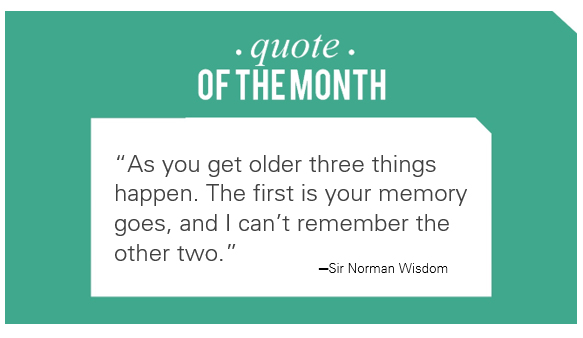

A Lesson from the Air Source
An Airbus HEAVY A380 is on its way across the Atlantic Ocean. It flies consistently at 800 km/hr at 40,000 feet, when suddenly a Eurofighter Typhoon with Tempo Mach 2 pulls up next to it!
The fighter jet pilot slows down, flies alongside the Airbus and greets its pilot by radio: “Airbus Super Heavy, boring flight, isn’t it? Take care and watch this!”
The Eurofighter rolls on its back, accelerates to break through the sound barrier, rises rapidly to a dizzying height, only to swoop down to almost sea level in a breathtaking dive. He loops back up next to the A380 and asks: “Well, how did you like that?”
The Airbus pilot answers: “Very impressive! Now, have a look here!”
The Typhoon sticks to its flight path as its pilot attentively watches the Airbus, but nothing happens. It just continues to fly stubbornly straight with no change in speed. After about five minutes, the A380 Captain radios: “Well, how about that?”
The military pilot asks in confusion: “What did you do?”
The pilot of the passenger plane laughs and says: “I got up, stretched my legs, went to the back of the plane to the bathroom, then got a cup of coffee and a chocolate fudge pastry and chatted with an old friend in first class.”
The moral of the story is: When you’re young, speed and adrenaline seem to be great. But as you get older and wiser, you learn that comfort and peace are more important.
This is called S.O.S. Slower, Older and Smarter. So, a message to all us seniors: It’s time to slow down and enjoy the rest of the trip.
Low PSAs to all,
Bob Marckini and Deb Hickey
To print the BOB Tales newsletter or view the newsletter with a larger font size, click here for the PDF file.
NO MEDICAL ADVICE: Material appearing here represents opinions offered by non-medically-trained laypersons. Comments shown here should NEVER be interpreted as specific medical advice and must be used only as background information when consulting with a qualified medical professional.



